What Is Kevlar?
Kevlar (para-aramid) is a strong, heat-resistant synthetic fiber, related to other aramids such as Nomex and Technora. Developed by Stephanie Kwolek at DuPont in 1965, the high-strength material was first used commercially in the early 1970s as a replacement for steel in racing tires. It is typically spun into ropes or fabric sheets that can be used as such, or as an ingredient in composite material components.
Kevlar has many applications, ranging from bicycle tires and racing sails to bulletproof vests, all due to its high tensile strength-to-weight ratio; by this measure it is five times stronger than steel. It is also used to make modern marching drumheads that withstand high impact; and for mooring lines and other underwater applications.
In a world where safety and protection are of utmost importance, the utilization of advanced materials has become crucial. Kevlar(K29), commonly known as a strong and versatile fabric, has been widely recognized for its outstanding properties, making it a sought-after material in various industries.
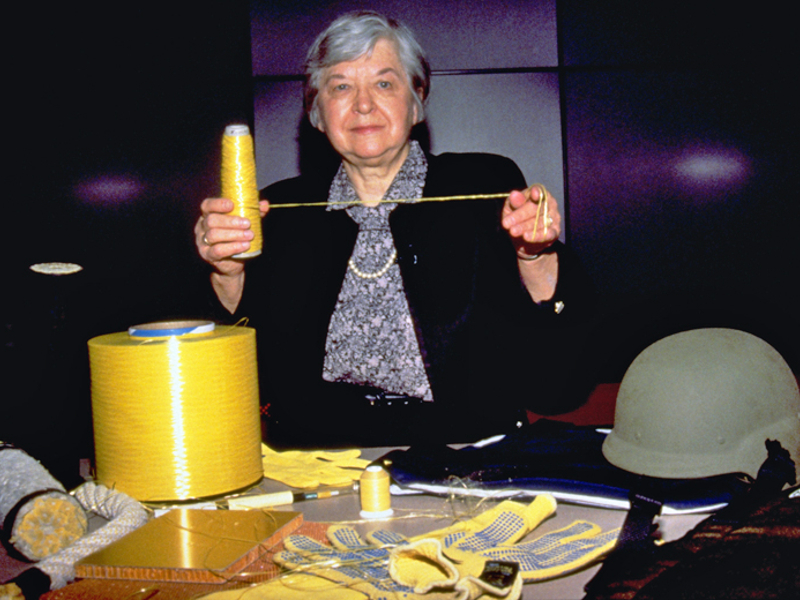
1.Tensile strength
The chemical structure of Kevlar® is comprised of several repeating inter-chain bonds. These chains are cross-linked with hydrogen bonds, providing a tensile strength 10X greater than steel on an equal weight basis. Kevlar has a measured tensile strength of about 3,620 megapascals, whereas nylon has a tensile strength of about 75 megapascals (depending on the types of nylon and Kevlar).
2.Cut & puncture resistance
Kevlar cannot be easily cut or punctured, due to the chain links that form the fibers of this material. The material is designed to withstand and distribute force, preventing sharp objects from easily penetrating or cutting through it. Due to the fully extended and perfectly aligned molecular chains within Kevlar fiber, Kevlar provides a strong protective barrier against slashes, cuts and punctures.
Kevlar is commonly used in protective gear such as gloves, body armor, and helmets, where the risk of cuts or punctures is high. Its resistance to cutting makes it effective against sharp objects like knives or glass shards, while its puncture resistance helps protect against puncture wounds from sharp objects like needles or nails.It is important to note that while Kevlar provides excellent resistance against cuts and punctures, no material is completely impervious. The effectiveness of Kevlar in any given situation can also depend on various factors such as the thickness and quality of the material, the angle and force of the impact, and the specific type of threat it is facing.
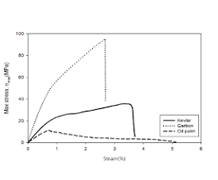
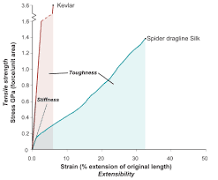
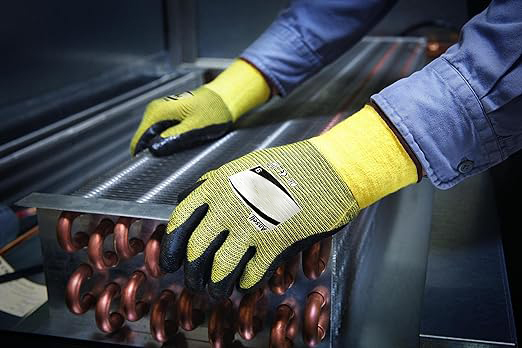
3. Heat resistance
Kevlar has good heat resistance properties, but it does have limitations. Kevlar is a synthetic fiber that can withstand temperatures up to 800 degrees Fahrenheit. However, its strength and other mechanical properties start to diminish at high temperatures, and it may begin to degrade or melt above its maximum recommended temperature. Thanks to this feature, Kevlar is an ideal material for flame-resistant clothing, including gloves, work clothes, etc.
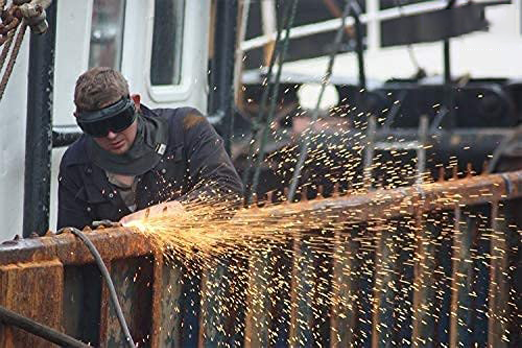
4. Ballistic resistance
Kevlar is prized for its ballistic properties. It is widely used in the production of body armor, helmets and other personal protective equipment. Kevlar's excellent strength-to-weight ratio and high tensile strength make it an excellent material for stopping or slowing projectiles. Kevlar's structure consists of long, tightly woven fibers that create a strong yet flexible material. When a bullet or other high-velocity projectile strikes Kevlar fiber, the energy from the incoming projectile is dispersed along the fiber. This dispersion and absorption of energy helps prevent bullets from penetrating or causing serious injury. Kevlar's ballistic properties can be further enhanced by layering multiple layers or incorporating other materials into the design. This combination of different materials and layering techniques helps distribute and dissipate energy more efficiently.
It's worth noting that while Kevlar has excellent ballistic properties, it's not completely bulletproof. Kevlar's effectiveness at stopping different types of bullets may vary, depending on factors such as bullet caliber, velocity and the number of layers of protective gear.
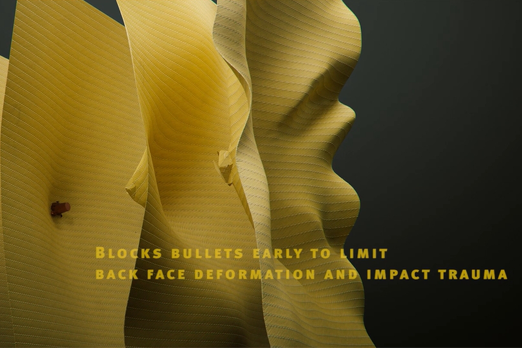
5. Applications
In addition to its use in ballistic protection, Kevlar fabric has various other applications.
Aerospace: Kevlar is used in aerospace applications due to its lightweight, high strength, and heat resistance properties. It is used in aircraft components, such as panels, fairings, fuselage sections, and rotor blades, to reduce weight while maintaining structural integrity.
Automotive: Kevlar is used in the automotive industry to reinforce and lightweight vehicle components. It is commonly used in the production of tires, belts, and hoses to improve durability, reduce weight, and increase fuel efficiency.
Industrial: Kevlar fabric is used in industrial applications like conveyor belts, hoses, and cables. Its high tensile strength and resistance to heat, chemicals, and abrasion make it suitable for demanding environments.
Sports and recreation: Kevlar is used in the production of sporting equipment and protective gear. It can be found in products such as sports and racing helmets, body armor, gloves, shoes, and bicycle tires. Kevlar's strength and impact resistance provide enhanced protection and durability in these applications.
Marine: Kevlar fabric is used in the marine industry for boat hull construction, sails, and other parts requiring strength and resistance to impact and abrasion.
Civil engineering and construction: Kevlar fabric can be used in civil engineering and construction projects for reinforcing materials such as concrete and asphalt. It adds strength, enhances durability, and improves resistance to cracking and impact.
Chemical and industrial safety: Kevlar's excellent resistance to chemical degradation makes it suitable for protective garments and equipment in chemical and industrial settings.
Electronics and technology: Kevlar is sometimes used in electronic devices to reinforce cables and provide additional durability and protection against bending and abrasion.
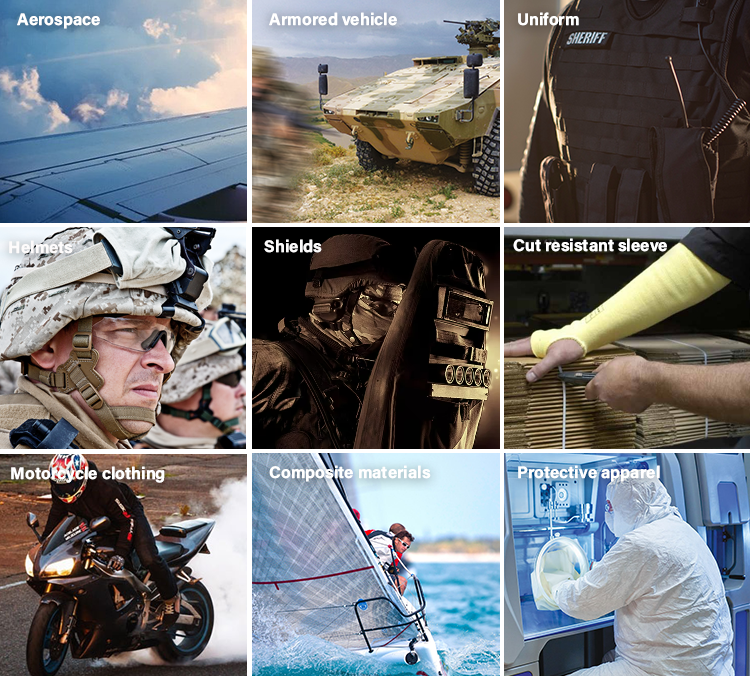
Post time: Oct-27-2023









